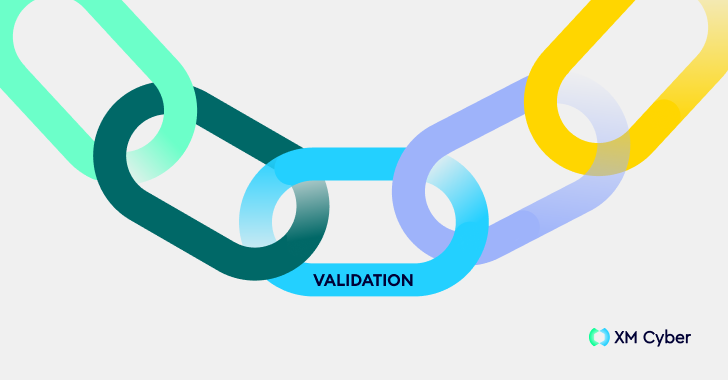Over the past few years, more than a few new categories of security solutions have emerged in hopes of stemming the never-ending tide of risks. One of these categories is Automated Security Validation (ASV), which provides an attacker perspective on exposure and empowers security teams to continuously test exposure, security measures, and remediation at scale. ASV is a critical element of any cybersecurity strategy, and by providing a clearer picture of potential vulnerabilities and impacts within an organization, security teams can identify weaknesses before they can be exploited.
However, relying on ASV alone can be limiting. In this article, we’ll look at how to combine detailed information about vulnerabilities with ASV with the broader analysis of the threat landscape provided by the Continuous Threat Exposure Management Framework (CTEM), can empower your security teams to make more informed decisions and allocate resources effectively. (Want to learn more about CTEM? Check it out this is a thorough guide to get started with CTEM.)
Backgrounder: ASV provides a comprehensive overview
ASV is a critical element of any modern cyber security program. It can block strong attacks by using validation to filter out exposures that don’t compromise your critical assets and to validate remediation that reduces risk. It can also improve efficiency by automatically verifying that security controls are properly configured, saving time on analyzing and remediating low-risk exposures. And it optimizes efficiency, ensuring the effectiveness of your investment in security tools to block cyber attacks and comply with policies and regulations. (psss XM Cyber has just been named the “Undisputed Leader” in Frost & Sullivan’s 2024 ASV Radar Report – Want to know why? Read the report here!)
By automating the validation process, you can reduce your reliance on manual testing, saving time and resources while increasing accuracy and coverage. Taking this proactive approach allows organizations to identify and address security gaps while maintaining protection against emerging threats.
In addition:
- ASV provides a comprehensive view. Traditional security methods may miss hidden assets or fail to account for vulnerabilities lurking in user accounts or security policies. ASV addresses these blind spots by performing a complete inventory, allowing security teams to address weaknesses before attackers can exploit them.
- ASV goes beyond simple discovery. ASV solutions analyze vulnerabilities in each asset and prioritize them based on their potential impact on critical assets. This allows security teams to focus their efforts on the most relevant threats.
- ASV is super scalable. ASV’s scalability makes it suitable for organizations of all sizes. For small teams, ASV automates the time-consuming tasks of asset discovery and vulnerability assessment, freeing up scarce resources for other activities. For large enterprises, ASV offers the necessary scale to effectively manage an ever-expanding attack surface.
- ASV complies with the regulatory framework. Such initiatives as Cybersecurity Maturity Model Certification (CMMC), National and Information Security (NIS2) Directiveand General Data Protection Regulation (GDPR) everyone is in favor of constantly checking the organization’s security posture. Implementation of the ASV decision demonstrates efforts to comply with these and other frameworks.
And yet… ASV alone is not enough
Attack Surface Validation is a robust solution that provides a comprehensive view of an organization’s attack surface, prioritizes vulnerabilities based on risk, and automates tasks to improve efficiency. It is a valuable tool, but by itself it is insufficient as a foundation for a complete and effective cybersecurity strategy. This does hones in on specific risks, but doesn’t necessarily provide a complete picture of your security posture.
Without inspecting your attack surface and identifying vulnerabilities that could harm your organization, relying on ASV alone can leave security teams in the dark. In addition, some ASV tools used in live settings can compromise business operations or provide avenues for cybercriminals down the line. That’s why its integration into a broader framework – such as a Continuous Threat Exposure Management (CTEM) framework – is important to maximize benefits and mitigate potential limitations.
How ASV fits into CTEM
Since its introduction in 2022, Continuous Threat Exposure Management (CTEM) has proven to be a highly effective strategy for reducing risk and improving security. Unlike other siled approaches, CTEM offers a proactive cybersecurity strategy that goes beyond simply identifying vulnerabilities. Comprised of five interrelated phases – scope, discovery, prioritization, verification (yes, that’s where ASV “lives”) and mobilization – CTEM continuously identifies and prioritizes threats to your business, empowering security and IT teams to mobilize around the issues that have the greatest influence. and fix them first.
By leveraging ASV capabilities to perform Step 4 of the CTEM framework, organizations can understand how attacks can occur and how likely they are to occur. And importantly, combining this with the impact assessment that takes place in CTEM Stage 3 (you can read all about this CTEM Stage 3, Prioritization, here) exposure to high impact can be identified and addressed in the most effective manner.
ASV, combined with impact assessment capabilities, helps organizations block high-impact attacks and achieve remediation efficiencies that it simply cannot provide on its own.
ASV – Delivery of “V” on CTEM Stage 4, Verification
This broader perspective offered by CTEM complements ASV’s strengths and enables more accurate threat prioritization, more effective remediation, and a stronger overall security posture. ASV is simply more valuable and robust when integrated with comprehensive discovery, assessment and prioritization of vulnerabilities and impacts in a hybrid environment.
Integrating ASV into CTEM allows organizations to leverage the strengths of both approaches. Together, they enable security teams to make informed decisions, allocate resources efficiently, and reduce overall risk to the organization. Combining ASV with CTEM enables organizations to achieve a more comprehensive, proactive and effective approach to cyber risk management.
You may be interested in the series about the 5 stages of CTEM. In this blog series, we provide a comprehensive understanding of each stage so that organizations can tailor their CTEM adoption to their needs and goals:




